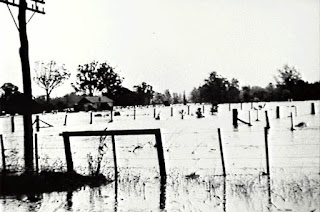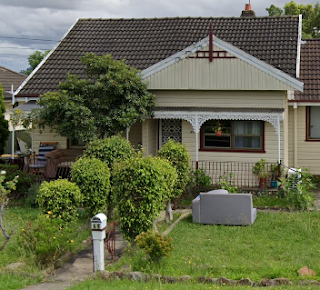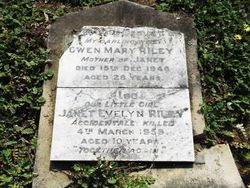Compiled by
Barry Lack using sources from Alan Shaw.
Most of what we know about the early life of Robert Lack comes
from his still-extant enlistment form, dated 7-7-1795, on the occasion of his entry
into the British Army at Waverley Camp (a temporary military camp set up in
1742 in Great and Little Warley, Essex, at Warley Common, an area used for
several later camps, of which the 1778 one was visited by George III and by Dr
Samuel Johnson). This document states that he was aged 21, had a brown
complexion, brown hair, black eyes, was five foot six inches tall on admission,
and could neither read nor write. Most importantly for research, he stated that
he was born in the Parish of Lynn (now “King’s Lynn”) in Norfolk, England, and
was by trade a shoemaker.
Researching baptisms in 1773 and 1774 at the few churches then
operating in King’s Lynn, we have identified two Robert Lacks, born in 1773
within a few months of each other. In the village of Syderstone, Robert Lack,
son of John Lack and Sarah Freezer, was baptised at St Mary’s Church on July
10, 1773. In the township of Gaywood, Robert Lack, son of Robert and Ann Lack,
was baptised at St Margaret’s Church on September 7, 1773. While no firm conclusion
can be drawn regarding which Robert eventually enlisted at Waverley Camp, most
researchers record Robert and Ann as the more-likely parents, as there was a
strong tradition for Robert and his New South Wales descendants to name their
first son after the father, perpetuating the name “Robert” for several
generations.
On enlistment, Robert was placed under the command of Colonel Sir
Charles Asgill. By May, 1797, he was a gunner in the Fifth Battalion of the
Royal Regiment of Artillery, the Company's Commander being Captain Edward Wood.
He received nineteen shillings in pay for the month of May, 1797, at which time
his army career came to an abrupt and inglorious end.
He was discharged from the army on May 27, 1797, charged – along
with another gunner, John Halbert, both men being stationed in the Park of
Artillery in the parish of St. Peter and St. Mary, near the town of Lewes, in
the county of Sussex, England – on the confession of William Akine, that,
in April 1797, he “did steal with force and arms in the company of others, 250
lbs of gunpowder, 3 barrels made of wood and copper (value 6 shillings), 4
tents made of hemp, linen, cotton, wood and tin (value 3 pounds), 1 marqee made
of same materials (value 30 shillings), the goods and chattels of Lord King
George III”.
Committed to Lewes Gaol on June 7, 1797, by William Green Esquire,
Robert was found guilty at the Sussex Assizes and sentenced, in August, 1797,
to be transported “beyond the seas for the term of seven years to such place,
etc.”.
He was transported, along with 103 other males, to the colony of
New South Wales, departing from Spithead, England on June 21, 1801, on the ship
Canada, in company with two other transport ships, Minorca
and Nile. The Canada (393 tons) was built at Shields, Northumberland
in 1800. It was under the command of Captain Wm Wilkinson, and the surgeon was
Jn Kelly.
While three males died on the journey (which took 176 days,
arriving in Sydney December 14, 1801), fortunately for Robert, his journey to
Australia was in more humane and favourable conditions than other fleets and
ships. This is reinforced by the following extract from page 93 of Frank
Clune's book, 'Rascals, Ruffians and Rebels of Early Australia': "On 1st
March 1802 Governor King wrote to the Duke of Portland saying, "All the
settlers and convicts arrived by the Canada, Minorca and Nile in good health, and were by far the best
conditioned that have ever arrived here....."".
Robert recognised his new home offered him a ‘second chance’. He
was granted his Certificate of Freedom in 1804. However, on August 18
that year, five men employed in a Government boat, viz. Peter Ware, Edward
Loug, Robert Lack, George Howell, and Henry Hart, were taken before a
Magistrate, and charged with stealing a quantity of corn out of a boat; which
offence being clearly proved, they were severally ordered to be corporally
punished, and the last named four sent to hard labour at Castle Hill. Governor
King had begun a government farm there, on July 8, 1801, referring to it as
‘Castle Hill’ on March 1, 1802. In 1804, the convicts rebelled in the ‘Castle Hill convict rebellion’, also known as the second 'Battle of Vinegar Hill'. I am unable to confirm whether Robert was involved in this
rebellion.
In the NSW General Muster of 1806, Robert was described as Free By
Servitude, and a self-employed shoemaker. He joined the Loyal Sydney Volunteers
under Governor William Bligh (1806-1808). In 1810, by his good conduct and
behaviour, he was granted 50 acres of land at what is now Riverwood, NSW, by
Colonel Paterson, the grant confirmed by Governor Lachlan Macquarie
(emancipists figured prominently in Macquarie’s plans for the colony. As a
result, he readily issued them with land grants of good farmland around Airds
and Appin).
Robert was one of the early grantees in the Riverwood area, for,
from 1788 to 1810, the area was inhabited by aboriginal tribes with an
occasional visit by escaped convicts or hunters in the government’s employ.
White settlement officially began in this area with land grants such as
Robert’s.
On February 1, 1811 Robert was granted his Certificate of
Emancipation and entrusted by Macquarie with keeping “in good perfect
Substantial and proper repair” the road from “the Toll Gate Opposite the
Factory in Parramatta to the Howes Bridge Windsor”, for which he was paid in
rum (a contract – dated 28-2-1815, signed with an ‘X’ by Robert Lack, and
witnessed by four government officials, including D’Arcy Wentworth -- and
authorisations of payment -- dated 2-6-1815, 4-9-1815, and 16-4-1816, and
signed by ‘L.M. His Excellency, Governor Macquarie’-- still survive).
Robert subsequently became an employer of convicts, for which
service he was granted additional land, as is evidenced by a surviving letter
(29-11-1825) from Robert Lack to Surveyor-General John Oxley requesting “one
such quantity of Land as I may be entitled to” in return for maintaining
convicts “free of expense to the Crown” (researcher Shirley White mentions a
grant “of 60 acres at ‘Botany Bay’, later Peakhurst”).
The 1822 Muster records William Eggleton as being an employee of
Robert Lack in Liverpool; he also employed William Thompson on this site, and
William Dyson on still more land, in Campbelltown, of which Shirley White notes
that “he must have bought, because he didn’t receive it in the form of a grant”
).
As Robert’s land grant was insufficient to maintain his stock and
carry on cultivation, he requested (September 4, 1824) a further land grant from
the governor, Sir Thomas Brisbane, due to his having maintained “free of
expense to the Crown a number of convicts, to which he might be entitled under
government regulations”. It is not known whether this last request was
successful, as a further letter to the Surveyor General, John Oxley, dated
November 29, 1825, provides details of convict maintenance. However, after
1825, due to the Bigge Report, governors were no longer authorised to issue
land grants to those who had completed their sentences or had been otherwise
pardoned.
In March, 1823, Robert was an Honorary Constable in the District
of Airds. He and the other Honorary Constables in the district signed and
submitted a list of eight measures to the government, to aid in “preserving
that Tranquillity in the District which, for some Months past, it has enjoyed”.
On March 20, 1826 he married Elizabeth Frazier (nee
Eggleton, daughter of William Eggleton, his employee from 1822) at
St.Peter's Church of England, Campbelltown, NSW. Both were classed as
"free" and signed the register with an 'x', following banns. The
ceremony was performed by Rev. Thomas Reddall and witnessed by John Patrick of
Airds, and Catherine Patrick, also from Airds, who signed with her ‘x‘ mark.
Elizabeth Eggleton was born on February 18, 1796, at Prospect, NSW, to William
Eggleton and Mary Dickenson, both First Fleet convicts. Before marrying Robert
Lack, Elizabeth was married to John Frazier (Frasier).
Robert and Elizabeth had four children :
1. Robert Lack, b. 1824
2. Eliza Lack, b.1826
3. Sarah Sophia Lack, b. 1828
4. Elizabeth Mary Lack, b. 1831
Robert had a shoe making business in Airds, and established the
first bakery in 1827, from which it is said, he supplied the government stores
with bread. At the time of the 1828 census, he had acquired 60 acres of land,
two horses and three head of cattle. In December, 1828, he had three bullocks
and a cow either strayed or stolen from him. He placed ads in the newspaper
offering a £1 reward or subsequent prosecution.
In 1831 Robert had a candle factory in Airds, using animal fats or
tallow to make the candles. A second candle factory owned by Paul Huon also
existed at the time. The Economic
History of Campbelltown records
that Robert and Paul were in partnership. Robert was also a Licensed Auctioneer.
Robert Lack died in Campbelltown, NSW, on April 12, 1832. He was
buried April 16, 1832, by Rev. T. Reddell, in that part of the cemetery set
aside for former convicts, at St.Peter's Church of England, Campbelltown, NSW.
It has been suggested that there was never a headstone to mark his grave, as
there had been opposition to him being buried in a church cemetery (consecrated
ground) due to his former-convict status; however, some former convicts buried
in St.Peter’s cemetery do have headstones, e.g. Edward Fletcher and Thomas
Hammond.
In Robert’s Will he was classed as a settler in the district of Airds. He bequeathed to his eldest son, Robert (who would become the father of the lone survivor of the 1849 Lack Cottage murders) his
farm of 30 acres in the district of Airds, adjoining Messrs Patrick and Riley.
The residue of his real and personal property was left to his 3 daughters,
Elizabeth, Sarah, and Eliza; the whole to be under the control of his wife,
Elizabeth, for the maintenance and support of herself for her natural life,
should she not again enter into marriage (she did, however, remarry, on
25-8-1834, to James Richardson, the sexton of St Peter’s Church, who would, on
January 20, 1849, brutally kill her, her daughter, and her granddaughter, and
critically injure her niece, inside the cottage that Robert had built for
them). There is also reference in his Will to allotments granted to him in
Campbelltown as well as land in Campbelltown, bought….Mr Daniel Cooper and now
partly built upon. One of the Executors of Robert’s Will was Thomas Rose.
































